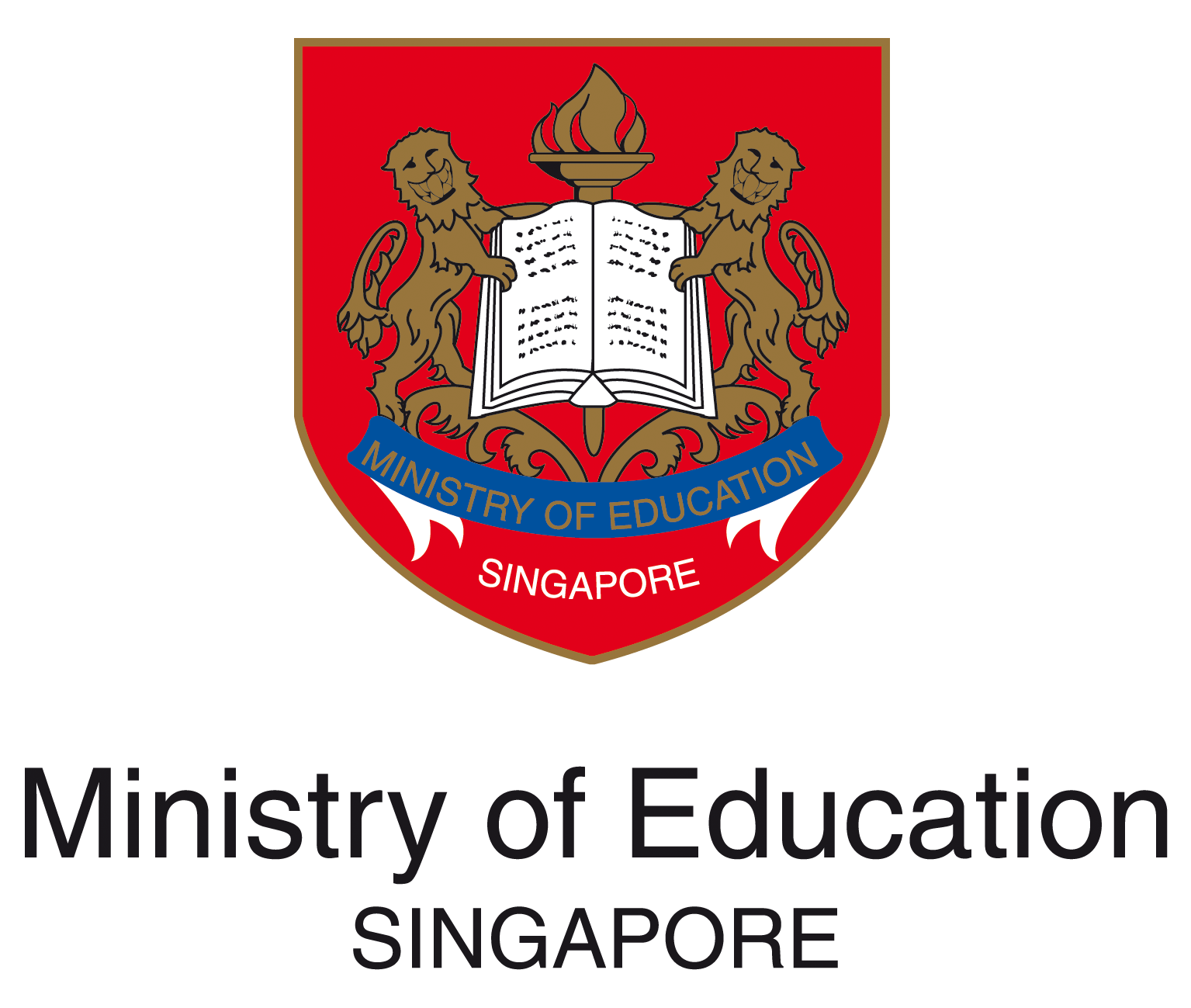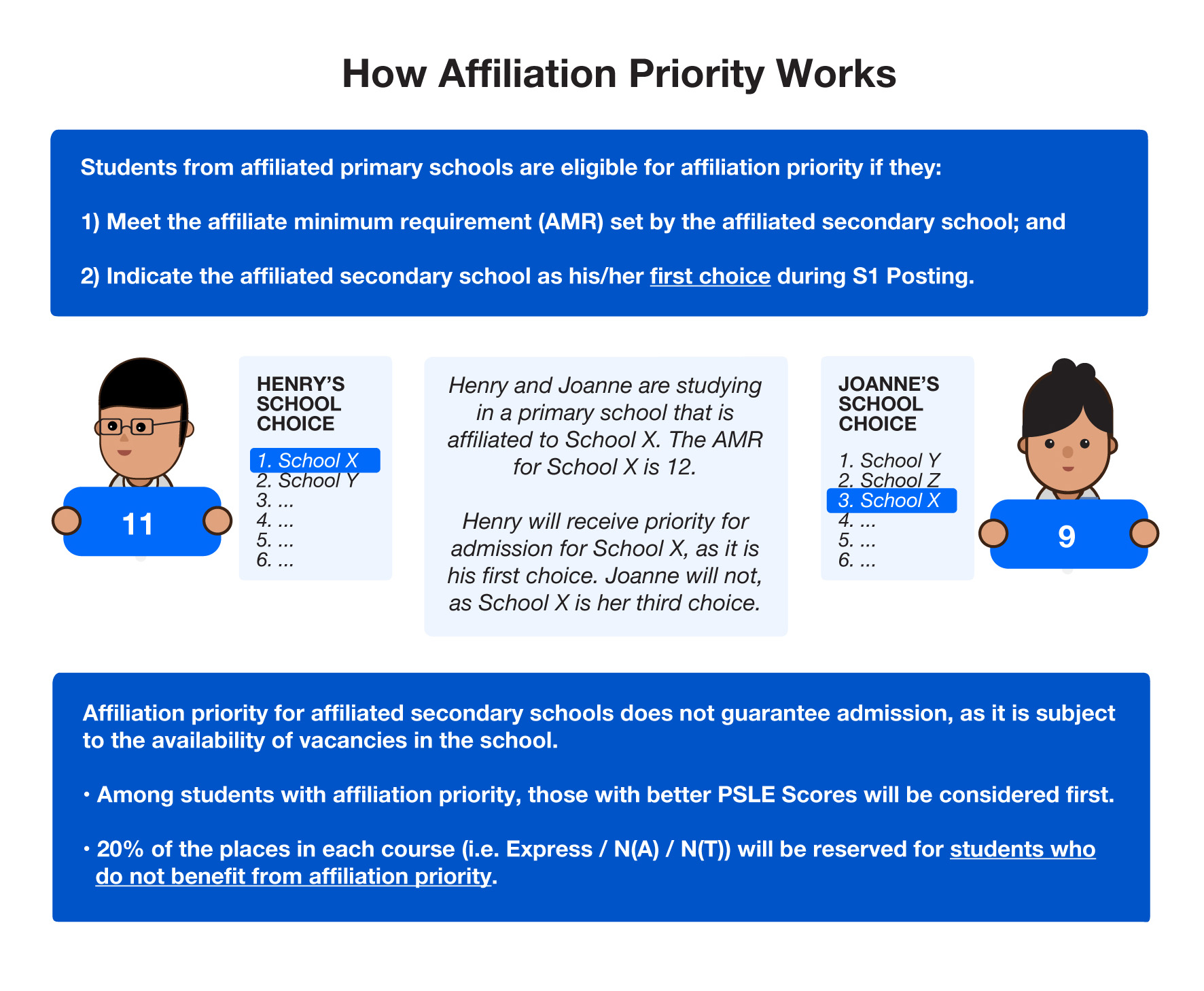S1 Posting Changes
Choice patterns have remained broadly similar. The posting outcomes for the 2021 and 2022 PSLE cohorts are comparable to that of previous cohorts. This suggests that students and their parents, like in previous years, have generally made informed school choices by selecting a range of schools with different COPs that included those that the student was able to meet.
The PSLE Score range of a school is the PSLE Score of the first and last student admitted to the school in the previous year, and the COP is the score of the last student admitted to the school. Schools’ PSLE Score ranges are not pre-determined by MOE or schools, and is a result of the cohort’s PSLE results and their school choices in that year’s S1 Posting Exercise, which is why it may vary slightly from year to year.
WE WANT TO GIVE GREATER WEIGHT TO STUDENTS’ AND PARENTS’ CONSIDERATIONS
- Choice order of schools will now matter more in posting to secondary school.
- We are introducing it as a tie-breaker to recognise the different considerations that families have when choosing secondary schools, e.g. the school’s ethos, culture, programmes and CCAs, as well as distance between the school and home.
- This way, we hope to encourage families to think more deeply about the schools they are choosing and look beyond schools’ cut-off points, to decide which would best suit their child’s strengths and interests.
- We hope that all students will enter secondary schools with courses and programmes that will nurture their interests and be a good fit for them.
Yes, choice already matters in S1 Posting under the T-score system, and it will matter more under the new posting system.
Under both the T-score and AL systems, students will be posted to a secondary school based on their choice order of schools, starting from their first choice. If all the places in a student's first-choice school have been filled, the student will be considered for their second-choice school. If it still has places, the student will be posted to this school.
The difference in S1 posting between the T-score and AL system arises when more than one student with the same score and citizenship status vie for the last available place in a secondary school. For S1 posting under the T-score system, a computerised ballot will be used to determine which student will get the last place. In the new system, the choice order will be considered first to determine which student will get the last place.
UNDER T-SCORE SYSTEM, CHOICE ORDER OF SCHOOLS DOES NOT GIVE PRIORITY IN POSTING
- For S1 posting under the T-score system, students indicate their choice of secondary schools in order of preference. They can choose up to six different secondary schools.
- Students are first ranked by academic merit (T-score Aggregate). The first student to be considered has the highest T-score Aggregate and will automatically be posted to the school that is their first choice. The next student is then considered and school places vacancies in secondary schools are filled up one by one.
- Students are posted to a secondary school based on their choice order of schools, starting from the first choice. If all the places in the first-choice school have been filled, the school that is second on the list will be considered. If it still has places, the student will be posted to this school.
- But the order in which students list their schools do not give them priority when deciding who will get a place in the event that more than one student with the same T-score Aggregate are vying for the last available place in a secondary school.
- For example, Don and Gerald, both Singapore citizens, have the same T-score Aggregate of 220, and are vying for the last place in School A. Although Don placed School A as his first choice, he does not have priority for posting over Gerald, who placed School A as his third choice. The last available place in the secondary school will be balloted between Don and Gerald.
UNDER THE NEW POSTING SYSTEM, CHOICE ORDER OF SCHOOLS MAY GIVE A STUDENT PRIORITY IN POSTING
- Under the new posting system, academic merit (PSLE Score) is still the first criterion for posting. The first student considered has the best PSLE Score and will be posted to the school that is their first choice.
- A student’s choice order of schools will be used as one of the tie-breakers if there are two students with the same PSLE Score vying for the last place in a school.
Students are posted based on academic merit, i.e. the student with the better PSLE Score will be admitted ahead of a student with a poorer PSLE Score. Only when there are two or more students with the same PSLE Score vying for the last available place(s) in a school, will tie-breakers be applied in the following order:
- First, Citizenship (Singapore Citizen has the highest priority, then Permanent Resident, and lastly International Student)
- Second, school choice order (first choice over second choice, and so on)
- If citizenship status and school choice order are the same, then computerised balloting will be used to determine who to be admitted
Students and their parents should give careful thought to the choices that they indicate since choice order of schools will be a tie-breaker, after citizenship. Students and their parents are encouraged to look beyond schools’ PSLE Score ranges when choosing a secondary school, and to consider schools that would be a good fit for the student’s overall learning needs. This includes considering the schools’ programmes or initiatives, Co-Curricular Activities, ethos and culture as well as home-school distance.
For the 2022 Secondary 1 posting, more than 80% of students were posted to a school within one of their first three choices, while more than 90% of students were posted to a school in one of their six choices. Students who required tie-breaking were mostly tie-broken by citizenship and school choice order, and the proportion of students who underwent computerised balloting was around 1 in 10. These observations are comparable to previous years, including 2021.
You are advised to place your preferred school at a higher rank and include at least 2-3 schools where your child’s PSLE Score is better than the school’s Cut-Off-Point (COP). Also, do make use of and fill in all six school choices. This will increase your child’s chances of being posted to a school of your choice.
If your child is not placed in any of their school choices, they will be posted to the nearest school with available vacancies, based on their PSLE Scores and registered home address.
STUDENTS CAN LEARN AT THEIR OWN PACE
- Students will continue to be assigned into Express, Normal (Academic) and Normal (Technical) courses till 2023.
- This enables us to better customise our teaching to support the needs of the children, so they can learn at a pace comfortable to them and make good progress.
- Our system today is flexible and caters to students with uneven strengths. Students can transfer to a more demanding course in secondary school if they show that they are able to cope. This would benefit late bloomers. Also, under subject-based banding, students who do well in some subjects can take these subjects at a higher level.
- From 2024 under Full Subject-Based Banding, at the start of Secondary 1, students can take a combination of G1/2/3 (G is for General) subjects based on their PSLE Scores, suited to their pace of learning. Thereafter, their subject levels will be based on their strengths and interests.
PSLE Score Ranges
- Using Achievement Levels, there are now only 29 possible PSLE Scores compared to more than 200 aggregates under the previous T-score system. As a result, schools would be less differentiated by COPs. This means that students would generally have a wider range of secondary schools to consider when choosing schools. Similar to the T-score system, schools’ COPs for that year are not pre-determined, and may vary from year to year depending on the cohort’s PSLE results and their school choices in the previous year’s S1 Posting Exercise.
- Parents are also encouraged to find out more about the schools’ Applied Learning Programme (ALP), Learning for Life Programme (LLP), Co-Curricular Activities (CCA), culture and proximity to their home when making their school choices. Parents can tap on the available resources such as the schools’ websites or MOE’s platforms, e.g. SchoolFinder to find out more details.
- As choice order of schools is a tie-breaker under the S1 posting system, we encourage parents and students to give careful consideration to the choices that they indicate on the S1 Option Form and choose schools that are a good fit for the learning needs of the student. They are also advised to consider at least 2-3 schools where the student’s PSLE Score is better than the school’s COP. Schools will continue to strengthen Education and Career Guidance (ECG) efforts to guide parents and students in making informed school choices.
- For considerations on how you can make school choices with your child, click here.
The PSLE Score ranges on SchoolFinder is are the PSLE Scores of the first and last students admitted into a particular school for the respective Posting Group in the previous year via the S1 Posting Exercise. The PSLE Score of the last student admitted to the school is the COP.
As such, the school’s PSLE Score range and COP on SchoolFinder may not always be the same as the actual PSLE Score range for this year, which will be determined by the PSLE results and school choices of this year’s P6 cohort.
Hence, while the PSLE Score range and COP on SchoolFinder can serve as a guide for students and parents in considering school choices, meeting them does not guarantee a child’s admission into the secondary school.
Click here to find out how you can make school choices with your child.
- While students who pass HCL in primary school will receive a posting advantage when applying to SAP schools, it is not compulsory for students to have taken HCL in primary school to enter SAP schools.
- In the example, the PSLE Score range for an SAP school is 6 (M) – 11 (P). The first student who was admitted into the school in the previous year had a PSLE Score of 6 and attained Merit in HCL, while the last student had a PSLE Score of 11 and attained a Pass in HCL [i.e. the Cut-Off Point (COP) of the school was 11 (P)].
- This means that:
- A student with a PSLE Score of 10 and better, and who did not take HCL would have been admitted, as 10 is a better PSLE score than the COP of 11 (P).
- However, a student with a PSLE Score of 11 and did not take HCL would not have able to enter the school as the COP is higher than the student’s score.
- For illustrative example on how to read PSLE Score ranges, click here.
- The asterisk indicates that the last student posted to the school had a PSLE Score better than 30. The school’s COP is 30 because the school still had N(T)/ Posting Group 1 vacancies after the S1 Posting Exercise.
- Hence, students with PSLE Score of 30 and had met the eligibility criteria for progression to Secondary 1 would have been able to obtain a place in the school if they had chosen the school during the S1 Posting Exercise.

